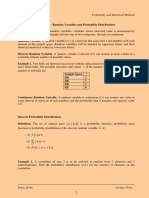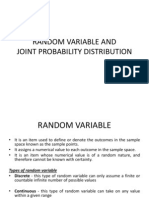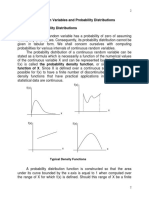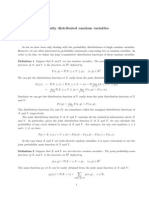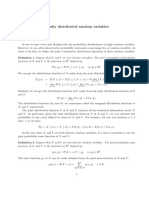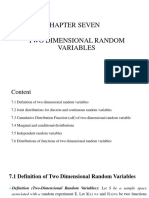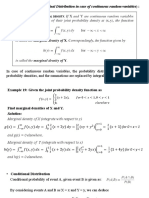0% found this document useful (0 votes)
32 views53 pages2 Distributions of Random Variables
The document discusses continuous probability distributions, joint and marginal distributions, and conditional distributions, along with examples and problems related to these concepts. It explains the calculation of probabilities, independence of random variables, and the mean of random variables. Additionally, it includes specific problems and solutions involving joint probability distributions and expected values.
Uploaded by
chrisamaezmabawadCopyright
© © All Rights Reserved
We take content rights seriously. If you suspect this is your content, claim it here.
Available Formats
Download as PDF, TXT or read online on Scribd
0% found this document useful (0 votes)
32 views53 pages2 Distributions of Random Variables
The document discusses continuous probability distributions, joint and marginal distributions, and conditional distributions, along with examples and problems related to these concepts. It explains the calculation of probabilities, independence of random variables, and the mean of random variables. Additionally, it includes specific problems and solutions involving joint probability distributions and expected values.
Uploaded by
chrisamaezmabawadCopyright
© © All Rights Reserved
We take content rights seriously. If you suspect this is your content, claim it here.
Available Formats
Download as PDF, TXT or read online on Scribd
/ 53
























